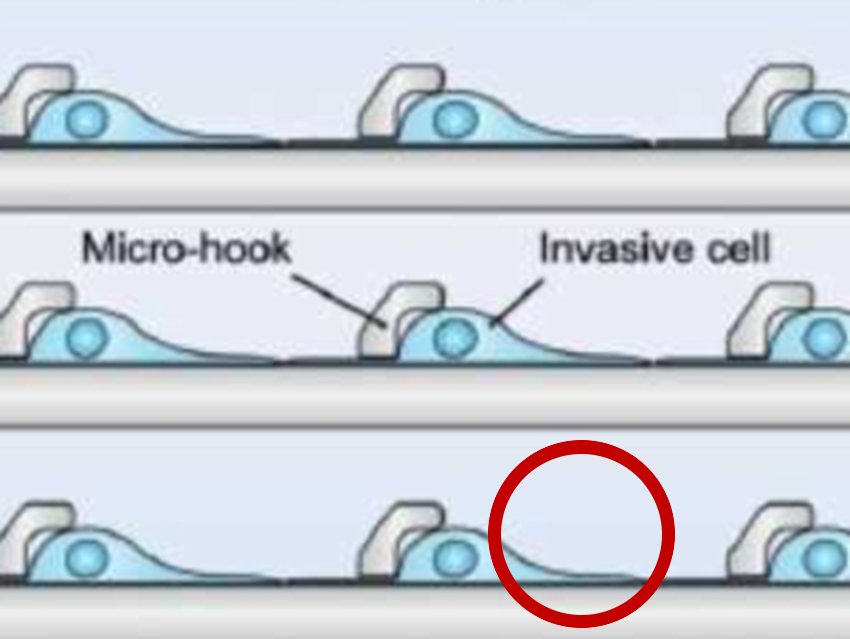Cancer cells can move from primary tumor sites to other organs. This can lead to metastasis, which is responsible for many patient deaths from tumors. Migrating cancer cells develop cell protrusions (circled in red) to guide their movement and invasion. The study of such protrusions could help to characterize the mechanisms of cancer metastasis.
Lidong Qin, Houston Methodist Research Institute, TX, and Weill Medical College of Cornell University, New York, both USA, and Bin Wang, University of Texas, MD Anderson Cancer Center, Houston, USA, and colleagues have developed a high-throughput microfluidic platform for the isolation of cell protrusions to analyze metastasis mechanisms. On this so-called protrusion-generating chip (PG-Chip), the researchers aligned the bodies and protrusions of more than 5000 cells of various types, including cancer cells. A suspension of the cells flows through channels on the chip, micro-hooks on the surface trap the cells, and protrusions are formed on the chip. Single cell protrusions can than be cut out using laser capture microdissection (LCM). The nuclei remain on the chip. According to the researchers, this method aligns bodies and protrusions with a precision not found in any other current method.
To study the gene expression patterns, the team enriched messenger RNAs from these isolated cell protrusions and analyzed them using RNA sequencing. They could show that independent samples gave consistent results, and concluded that their method could be used to investigate gene expression and signaling mechanisms related to metastasis.
- High-Throughput Isolation of Cell Protrusions with Single-Cell Precision for Profiling Subcellular Gene Expression,
Pengchao Zhang, Xin Han, Jun Yao, Ning Shao, Kai Zhang, Yufu Zhou, Youli Zu, Bin Wang, Lidong Qin,
Angew. Chem. Int. Ed. 2019.
https://doi.org/10.1002/anie.201903694




